In today’s fast-paced world, finding time for exercise can seem daunting. However, the good news is that you don’t need to spend hours at the gym to reap the benefits of physical activity. Even small amounts of movement can have a significant impact on your overall health and well-being.
The Benefits of Small Amounts of Exercise
Research has shown that even short periods of physical activity can:
- Improve cardiovascular health: Regular movement can help lower blood pressure, improve circulation, and reduce the risk of heart disease.
- Boost mood and energy: Exercise releases endorphins, which can help alleviate symptoms of anxiety and depression, and increase energy levels.
- Support weight management: Even small amounts of physical activity can help with weight loss and maintenance.
- Improve sleep: Regular movement can help regulate sleep patterns and improve the quality of sleep.
Incorporating Movement into Daily Life
You don’t need to be a fitness enthusiast to benefit from physical activity. Here are some simple ways to incorporate movement into your daily routine:
- Take the stairs: Ditch the elevator and opt for the stairs instead.
- Walk to work: If possible, walk or bike to work instead of driving.
- Take a short walk during breaks: Use your lunch break or coffee break to take a short walk outside.
- Do household chores: Activities like vacuuming, mopping, and gardening can count as physical activity.
The Importance of Consistency
The key to benefiting from physical activity is consistency. Aim to incorporate some form of movement into your daily routine, even if it’s just for a few minutes a day. Over time, these small amounts of movement can add up and make a significant difference in your overall health and well-being.
Conclusion
In conclusion, a little movement can go a long way in improving your overall health and well-being. By incorporating small amounts of physical activity into your daily routine, you can experience the many benefits of exercise without feeling overwhelmed. So, start small, stay consistent, and watch your health and fitness levels improve over time.
Get moving, stay active, and enjoy the journey!
As the sun shines brighter and the days get longer, it’s time to kickstart your fitness journey and get ready for summer. Whether you’re looking to tone up, lose weight, or simply feel more confident in your own skin, this guide will help you achieve your goals.
Setting Your Summer Fitness Goals
Before you begin, take some time to reflect on what you want to achieve. Do you want to:
- Lose weight and tone up?
- Increase your endurance and stamina?
- Build muscle and strength?
- Improve your overall health and wellness?
Write down your goals and make them specific, measurable, achievable, relevant, and time-bound (SMART). This will help you stay focused and motivated throughout your fitness journey.
Creating a Summer Fitness Plan
- Cardio: Incorporate activities like running, cycling, or swimming into your routine to improve cardiovascular health and burn calories.
- Strength Training: Focus on building muscle and strength with exercises like squats, lunges, and push-ups.
- Flexibility and Mobility: Incorporate stretching and yoga to improve flexibility and range of motion.
- Nutrition: Fuel your body with a balanced diet that includes plenty of fruits, vegetables, whole grains, and lean protein sources.
Summer Fitness Tips
- Stay Hydrated: Drink plenty of water throughout the day to stay energized and focused.
- Find a Workout Buddy: Exercising with a friend or family member can help keep you motivated and accountable.
- Mix It Up: Vary your workout routine to avoid boredom and prevent plateaus.
- Get Enough Sleep: Aim for 7-9 hours of sleep per night to help your body recover and repair.
Summer Fitness Challenges
- 30-Day Plank Challenge: Start with a 30-second plank and gradually increase the time each day.
- Summer Step Challenge: Aim for 10,000 steps per day and track your progress.
- Outdoor Workout Challenge: Commit to working out outdoors at least 3 times per week.
Get Ready for Summer with Confidence
By following these tips and challenges, you’ll be well on your way to achieving your summer fitness goals. Don’t forget to be patient, stay consistent, and celebrate your progress along the way. Get ready to rock your summer body with confidence!
When it comes to working out, one of the most debated topics is whether to exercise on an empty stomach or not. Some swear by the benefits of fasting before a workout, while others claim it’s a recipe for disaster. In this article, we’ll delve into the pros and cons of working out on an empty stomach, helping you make an informed decision that suits your fitness goals and needs.
Pros of Working Out on an Empty Stomach:
- Increased Fat Burning: Exercising on an empty stomach can increase the amount of fat your body burns for energy. When you haven’t eaten, your body is forced to rely on stored fat for fuel, which can be beneficial for weight loss.
- Improved Mental Clarity: Fasting before a workout can help improve mental clarity and focus. Without the distraction of a full stomach, you may find it easier to concentrate on your exercise routine.
- Enhanced Autophagy: Autophagy is the process by which your body breaks down and recycles damaged cells and proteins. Exercising on an empty stomach can stimulate autophagy, leading to improved cellular health and renewal.
- Increased Human Growth Hormone (HGH) Production: Fasting has been shown to increase production of HGH, which is essential for muscle growth and repair.
Cons of Working Out on an Empty Stomach:
- Reduced Performance: Exercising on an empty stomach can lead to reduced performance, especially during high-intensity workouts. Without adequate fuel, your body may struggle to power through your exercise routine.
- Dizziness and Lightheadedness: Fasting before a workout can cause dizziness and lightheadedness, especially if you’re not used to exercising on an empty stomach.
- Loss of Muscle Mass: If you’re not consuming enough protein before a workout, you may be at risk of losing muscle mass. This is especially true if you’re doing high-intensity strength training exercises.
- Nutrient Deficiencies: Exercising on an empty stomach can lead to nutrient deficiencies, particularly if you’re not consuming a balanced diet. This can negatively impact your overall health and fitness.
The Verdict:
While there are benefits to working out on an empty stomach, it’s essential to weigh these against the potential drawbacks. If you do decide to exercise on an empty stomach, make sure to:
- Listen to your body and stop if you experience any adverse effects
- Stay hydrated by drinking plenty of water before, during, and after your workout
- Consume a balanced diet that includes plenty of protein, complex carbohydrates, and healthy fats
Ultimately, whether to work out on an empty stomach or not depends on your individual needs, goals, and preferences. Experiment with different approaches to find what works best for you.
Finding a protein smoothie/shake I have actually enjoyed has been a challenge over the years! The recipe below is by FAR my favorite one, and will include all the links you need to order the products to make it. Here it is:
Starting off you will need a base for your smoothie. Some choose almond milk or oat milk. Others prefer lactaid milk or organic milk. It is up to you and your dietary needs. You will need 1c of base. Add 2-3 ice cubes on top of this.


Next up are the fruits that go into the smoothie. I usually add 1/2 of a sweet banana, 3 strawberries, and a handful of berries.

If you are a veggie person a handful of spinach can go in there too! This is optional.

I also add 1 TBSP of organic peanut butter OR almond butter. I LOVE the Maranatha brand. Here is a link (ad) to their product:
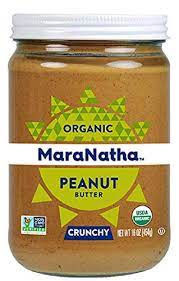
Another optional add is Anthony’s organic coffee grounds. I only add 1 tsp of this on the days I need a little pick me up. Here is the link (ad) to their product:
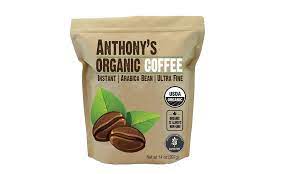
Last but not least are the proteins I use to top off this delicious smoothie. I use 1 scoop of Garden of Life collagen peptides and 1-2 Tbsp. of Nutribiotic Chocolate protein. Links (ad) are both below:
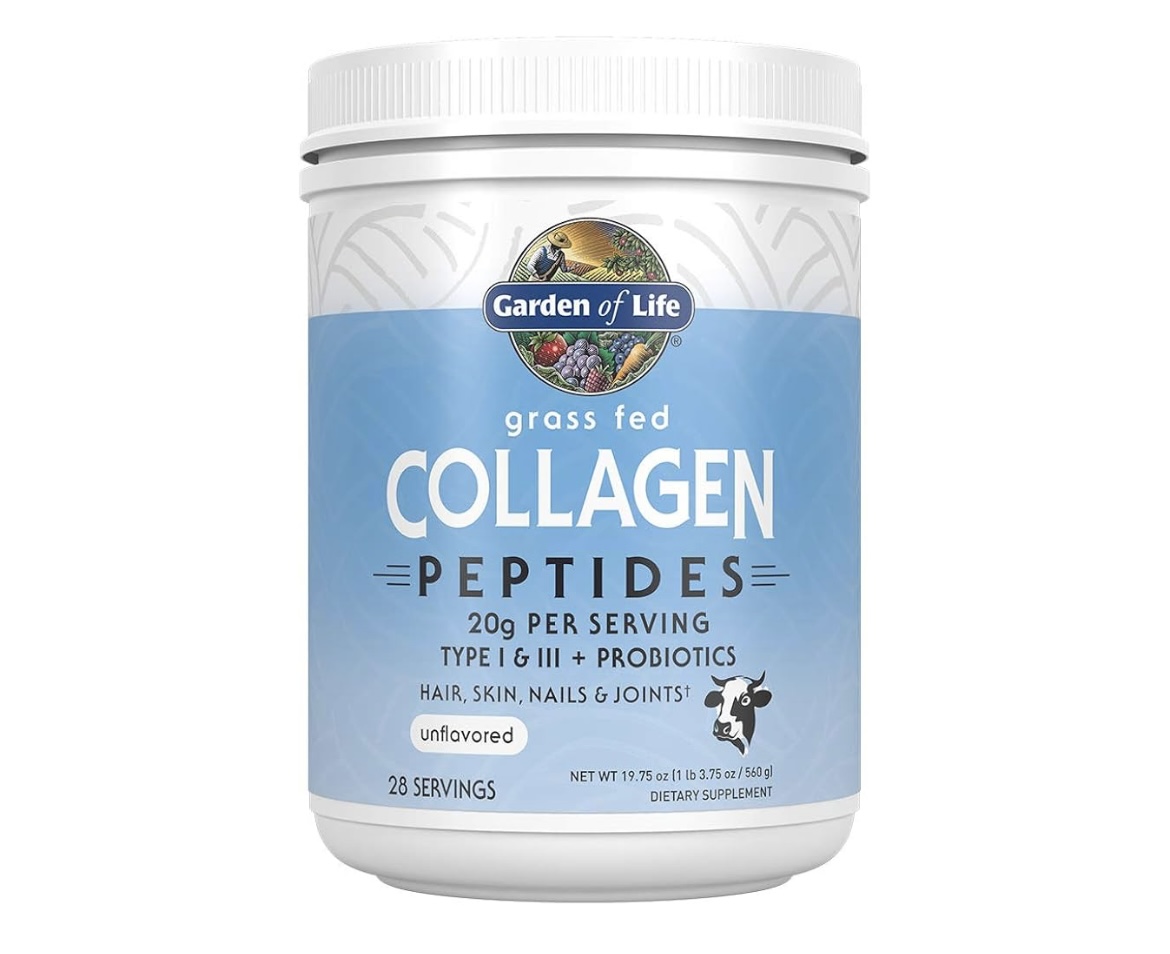
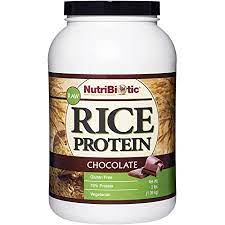
Last but not least! How do you blend all these ingredients together? I use the magic bullet! This is a blender with a plastic cup included. No messy clean up as there can be with a traditional blender. The link (ad) is below:
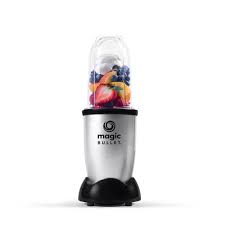
Here is a REEL showing you all these steps combined! Let me know how you liked your smoothie!
https://www.instagram.com/reel/CUa2QF_AxUK/

DISCLOSURE: This post contains affiliate links. This means, at no extra cost to you, we make a small commission if you purchase a product through these links. As an Amazon Associate I earn from qualifying purchases. This helps support CGM Fitness. Thank you!
Winter is here, and for some that may equal those dreaded winter blues. Do you feel sad, lethargic, experience difficulty focusing or fatigue during winter? You’re not alone. With colder weather and shorter days, a lot of us experience the winter blues. For many, this feeling is temporary and can be managed with simple lifestyle changes. But for others, it can be a more severe type of depression called Seasonal Affective Disorder, which reaching out to a health care provider can be helpful for. This blog is focused on those who tend to have a harder time during the colder months. So if that sounds like you, there is good news! Here are some steps you can take to beat the winter blues.
If you feel like the symptoms are severe please seek professional help. There is a major difference between feeling the winter blues and Seasonal Affective Disorder. Feeling sad can be normal during the colder months, however if it’s interfering with your ability to function in your daily life, it could be serious and you should seek professional help.
During the winter months, many of us leave the house when it is still dark and we sit in offices with barely any windows all day. We go outside less because of how cold it is and we return home usually when its already dark. During these seasons it’s easier to feel a sense sadness and fatigue. Here is what can help ease those feelings.
Turn the TV OFF!
During the winter months we tend to stay inside more and we can easily spend hours watching tv or the news. Minimize the time you spend watching the news. If it’s on an endless cycle we can begin to feel depressed by some of the news we are hearing. (It’s hardly ever good!) Make a plan to limit your TV time and find other ways to entertain yourself. Reading a book can help transfer you to another place and time. Research recipes you’ve been wanting to try. That recipe you saw on a buzzfeed article or on Instagram — give it a go!
Try a new hobby or activity. It could be as simple as trying a new board or card game, cooking, crafts, knitting or outdoor activities if you don’t mind the cold. You may find a new hobby or passion that gets you through these cold darker months.
Boost Your Mood and Ambiance
Don’t fight the season, instead embrace it! Use some ambient lighting to turn up the coziness level. Light some candles, choose a scent you love that brings you happiness or triggers a memory that brings you joy. Get some cozy and soft textiles and lounge wear you love. Maybe even some silly socks or fun slippers! Create a playlist that you love.
Getting quality foods in your system is important. Since getting vitamin D is harder during the winter months, make sure you’re eating foods with vitamin D. These can include salmon, sardines, egg yolks, red meat, and vitamin fortified cereals. Good quality food can help balance your mood. Winter is a great time to break out grandma’s old recipes or try something nourishing and comforting.
Seek Out The Sun
Getting outside is important during the winter months. Even though it’s colder and wetter, go outside as much as possible. Take a drive to a warmer location and stay for a few days if you need to. If you can’t travel thats ok. Open those curtains and let in natural light. Put on your coziest warm clothes and go for a walk around your neighborhood in the daylight.
Physical Activity
Start a workout program or even just go for regular walks. Exercise has been shown to boost mood, decrease the symptoms of depression and reduce stress. You can start slow with 10 minutes a day and each week increase by 10 minutes till you can get 60 minutes a day of physical activity. The simplest thing you can do is get outside and go for a walk. In a Harvard study, people who walked just 20 min a day had 43% fewer sick days than those who didn’t. That increased immune system power is crucial during the colder months.
Reach Out!
Contact those who bring you happiness and who fill you with joy. Your support system of family and friends is crucial for fending off winter blues. A phone call, getting together for coffee or dinner, a walk together or even if by zoom if needed. Getting together or socializing helps us all. It boosts our mood and strengthens bonds. We all need that especially during those tough colder months.
There are a lot of changes we can make to help us during these winter months to bring us joy and bring joy to others. Many of them small and manageable! However, if you feel like nothing is working and are finding yourself isolating and having difficulty getting on with your daily life please seek help. You are not alone. Depression is a serious matter and is not something to be ashamed of. We all need help from time to time. So if you feel like this steps aren’t helping. Let your support system know and ask for help from a professional.
The start of a new year is often met with excitement and motivation to make positive changes in our lives. For many, this means setting ambitious fitness goals, such as running a marathon, losing a certain amount of weight, or finally getting that six-pack. However, as the days turn into weeks, and the weeks into months, many of us find ourselves struggling to stick with our resolutions.
In this article, we’ll explore why New Year’s resolutions can be particularly tough to stick with in the fitness world, and offer some practical tips to help you overcome these challenges and achieve your goals.
Unrealistic Expectations
One of the main reasons why New Year’s resolutions can be tough to stick with is that they’re often based on unrealistic expectations. We see fitness models and athletes on social media, and we think that we can achieve their level of fitness in just a few short weeks. However, the reality is that fitness is a journey, not a destination.
Reaching a high level of fitness takes time, patience, and dedication. It’s not something that can be achieved overnight, and it’s certainly not something that can be sustained through fad diets or quick-fix workouts.
Lack of Accountability
Another reason why New Year’s resolutions can be tough to stick with is that they often lack accountability. We set our goals, but we don’t have anyone to report to, or anyone to hold us accountable. This can make it easy to fall off the wagon, especially when the going gets tough.
Sustainability
Many New Year’s resolutions are based on drastic changes that are not sustainable in the long term. For example, resolving to go to the gym every day, or to cut out entire food groups, may seem like a good idea at first, but it’s unlikely to be something that you can maintain over time.
Tips for Success
So, how can you overcome these challenges and achieve your fitness goals? Here are a few tips to get you started:
- Set Realistic Goals: Instead of setting unrealistic goals, try setting smaller, more achievable goals. For example, instead of resolving to lose 50 pounds in 3 months, try resolving to lose 1-2 pounds per week.
- Find Accountability: Find someone to hold you accountable, whether it’s a workout buddy, a personal trainer, or a fitness community.
- Focus on Sustainability: Instead of making drastic changes, focus on making small, sustainable changes that you can maintain over time.
- Celebrate Small Wins: Celebrate your small wins, even if they seem insignificant. This will help you stay motivated and encouraged throughout your journey.
- Be Kind to Yourself: Finally, be kind to yourself. Remember that setbacks are a normal part of the journey, and don’t be too hard on yourself if you slip up.
In conclusion, while New Year’s resolutions can be tough to stick with in the fitness world, it’s not impossible. By setting realistic goals, finding accountability, focusing on sustainability, celebrating small wins, and being kind to yourself, you can overcome the challenges and achieve your fitness goals. Remember, fitness is a journey, not a destination, and it’s the small, consistent changes that add up to make a big difference over time.
When it comes to fitness, one of the most enduring debates revolves around the best time to work out and what to eat beforehand. Specifically, the question of whether to exercise on an empty stomach has sparked intense discussion among athletes, trainers, and health enthusiasts. In this article, we’ll delve into the pros and cons of working out on an empty stomach, exploring the science behind this practice and helping you make an informed decision.
What is Fasting Exercise?
Fasting exercise, also known as exercising on an empty stomach, involves engaging in physical activity without consuming any food or calories beforehand. This approach has gained popularity among some fitness enthusiasts, who claim it enhances fat burning, improves mental clarity, and boosts overall performance.
Pros of Working Out on an Empty Stomach:
- Increased Fat Burning: Exercising on an empty stomach forces your body to rely on stored fat for energy, potentially leading to increased fat loss.
- Improved Mental Clarity: Fasting exercise can stimulate the production of brain-derived neurotrophic factor (BDNF), enhancing focus and mental clarity.
- Enhanced Human Growth Hormone (HGH) Production: Fasting has been shown to increase production of HGH, which can aid in muscle growth and repair.
- Increased Autophagy: Exercising on an empty stomach may stimulate autophagy, a natural process where your body recycles damaged cells and proteins.
- Improved Insulin Sensitivity: Regular fasting exercise can improve insulin sensitivity, reducing the risk of developing type 2 diabetes.
Cons of Working Out on an Empty Stomach:
- Reduced Performance: Exercising without fuel can lead to decreased strength, endurance, and overall performance.
- Increased Muscle Breakdown: Without adequate nutrients, your body may break down muscle tissue for energy, compromising muscle growth and repair.
- Hypoglycemia and Dizziness: Exercising on an empty stomach can cause blood sugar levels to drop, leading to dizziness, lightheadedness, and even fainting.
- Nutrient Deficiencies: Regularly exercising on an empty stomach can lead to inadequate nutrient intake, potentially causing deficiencies in essential vitamins and minerals.
- Adverse Effects on Hormones: Fasting exercise can disrupt hormone levels, including cortisol, insulin, and leptin, potentially leading to adverse effects on overall health.
Who Should Avoid Exercising on an Empty Stomach?
- Diabetics: Individuals with diabetes should avoid fasting exercise due to the risk of hypoglycemia.
- Pregnant or Breastfeeding Women: Pregnant or breastfeeding women require adequate nutrients to support fetal growth and milk production.
- Individuals with Eating Disorders: Those struggling with eating disorders should prioritize balanced nutrition and avoid restrictive eating patterns.
- Older Adults: Older adults may require more frequent meals to maintain energy levels and support overall health.
The Verdict:
While exercising on an empty stomach has potential benefits, it’s essential to weigh these against the potential drawbacks. If you decide to try fasting exercise, consider the following:
- Start with low-intensity workouts: Gradually increase intensity and duration as your body adapts.
- Listen to your body: If you experience adverse effects, reconsider your approach.
- Prioritize post-workout nutrition: Refuel with a balanced meal or snack within 30-60 minutes after exercise.
- Consult a healthcare professional: Discuss your individual needs and health status with a qualified healthcare professional.
In conclusion, working out on an empty stomach is not a one-size-fits-all approach. While it may offer benefits for some, others may experience adverse effects. By understanding the pros and cons and consulting with a healthcare professional, you can make an informed decision that suits your unique needs and fitness goals.
Sources:
- American Council on Exercise (ACE) – “Exercising on an Empty Stomach”
- National Academy of Sports Medicine (NASM) – “Fasting and Exercise”
- Journal of the International Society of Sports Nutrition – “The Effects of Fasting on Exercise Performance”
Word Count: 796
Twice a year, we adjust our clocks to accommodate daylight saving time (DST). While the extra hour of sunlight is welcomed, the time change can disrupt our routines, energy levels, and physical activity. In this article, we’ll explore tips to help you stay active and maintain your fitness momentum despite the clock change.
The Challenges of Time Change
The time change can affect our bodies in various ways:
- Circadian rhythm disruption
- Sleep deprivation
- Reduced energy levels
- Increased laziness
These challenges can make it difficult to maintain an active lifestyle. However, with a few simple adjustments, you can overcome these obstacles and stay on track.
10 Tips to Stay Active During the Time Change
- Gradual Adjustment: Start adjusting your sleep schedule a few days before the time change to minimize disruption.
- Stick to Routine: Maintain your regular exercise schedule, even if it feels harder.
- Find Indoor Activities: Engage in indoor exercises like yoga, Pilates, or bodyweight workouts when outdoor activities are challenging.
- Schedule Morning Workouts: Take advantage of the earlier sunrise by exercising in the morning.
- Stay Hydrated: Drink plenty of water to combat fatigue and maintain energy.
- Get Some Morning Sunlight: Exposure to natural light helps regulate your circadian rhythms.
- Avoid Screen Time Before Bed: Promote better sleep by limiting screen time before bedtime.
- Incorporate High-Intensity Interval Training (HIIT): Boost energy with efficient, high-intensity workouts.
- Find a Workout Buddy: Stay motivated with a fitness partner.
- Reward Yourself: Celebrate small victories with non-food rewards, like a relaxing bath or a good book.
Additional Strategies
- Prioritize sleep (7-9 hours for adults)
- Eat a balanced diet rich in fruits, vegetables, whole grains, and lean proteins
- Limit caffeine and sugary snacks
- Engage in stress-reducing activities, such as meditation or deep breathing
The time change doesn’t have to derail your fitness journey. By incorporating these tips into your daily routine, you’ll stay active, energized, and motivated. Remember, consistency is key. Stay committed, and you’ll emerge stronger and healthier on the other side of the time change.
Cardiovascular exercise, or cardio, has long been touted as a crucial component of a healthy lifestyle. We’ve all heard the recommendations: aim for at least 150 minutes of moderate-intensity aerobic exercise per week, or 75 minutes of vigorous-intensity aerobic exercise per week. But is this really the magic number for optimal health? In this blog, we’ll delve into the world of cardio and explore just how much we truly need to stay healthy.
The Benefits of Cardio
Before we dive into the details, let’s quickly review the benefits of regular cardio exercise:
- Improves heart health
- Increases lung function
- Boosts mood and reduces stress
- Enhances sleep quality
- Supports weight management
- Increases energy levels
The Recommended Amount
The American Heart Association recommends at least 150 minutes of moderate-intensity aerobic exercise per week. This can be broken down into:
- 30 minutes per day, 5 days per week
- 45 minutes per day, 3 days per week
- 75 minutes per week of vigorous-intensity aerobic exercise
However, is this one-size-fits-all approach really effective?
Individual Needs
The truth is, our individual needs vary greatly. Factors such as age, fitness level, health status, and lifestyle influence our cardio requirements. For example:
- Older adults may benefit from shorter, more frequent sessions
- Athletes or those with high physical demands may require more intense and frequent cardio
- Those with certain health conditions, such as heart disease, may need to limit their cardio intensity and frequency
The Myth of “More is Better”
While some may believe that more cardio is always better, this isn’t necessarily the case. Overdoing it can lead to:
- Burnout and decreased motivation
- Increased risk of injury
- Overtraining syndrome (OTS)
- Negative impact on immune function
Finding Your Sweet Spot
So, how much cardio do we truly need? The answer lies in finding your individual sweet spot. Consider the following:
- Start with small, achievable goals (20-30 minutes per session, 2-3 times per week)
- Gradually increase duration and frequency as fitness level improves
- Listen to your body and rest when needed
- Incorporate variety in your cardio routine (e.g., running, cycling, swimming, HIIT)
While cardio is undoubtedly an essential component of a healthy lifestyle, the one-size-fits-all approach doesn’t always apply. By understanding our individual needs and finding our unique sweet spot, we can harness the benefits of cardio without overdoing it. Remember, consistency and balance are key. So, get moving, but don’t forget to listen to your body and make adjustments as needed.
Burnout is a state of emotional, mental, and physical exhaustion that can creep up on anyone, regardless of their profession or personal life. It’s a signal that something needs to change, and ignoring it can lead to severe consequences. In this blog, we’ll explore the signs of burnout, its causes, and most importantly, provide practical strategies for recovery and renewal.
Signs of Burnout
- Chronic fatigue and exhaustion
- Loss of motivation and purpose
- Increased irritability and mood swings
- Reduced productivity and performance
- Physical symptoms like headaches and insomnia
Causes of Burnout
- Excessive workload and long hours
- Lack of control and autonomy
- Poor work-life balance
- Unclear expectations and conflicting priorities
- Unfair treatment and lack of support
Strategies for Recovery and Renewal
- Recognize and Accept: Acknowledge your burnout and accept it as a signal for change.
- Take a Break: Give yourself permission to rest and recharge.
- Prioritize Self-Care: Engage in activities that nourish your mind, body, and soul.
- Set Boundaries: Learn to say “no” and establish clear limits.
- Seek Support: Connect with loved ones, colleagues, or a therapist.
- Re-Evaluate Priorities: Assess your values and goals, and make adjustments.
- Practice Time Management: Learn effective techniques to manage your workload.
- Cultivate Mindfulness: Embrace mindfulness practices to reduce stress.
- Seek Professional Help: If needed, consult a mental health professional.
Conclusion
Burnout is a common experience that can happen to anyone. By recognizing the signs, understanding the causes, and implementing these strategies, you can break free from burnout and rediscover your energy, motivation, and purpose. Remember, taking care of yourself is not a luxury, it’s a necessity. Take the first step towards recovery and renewal today.
